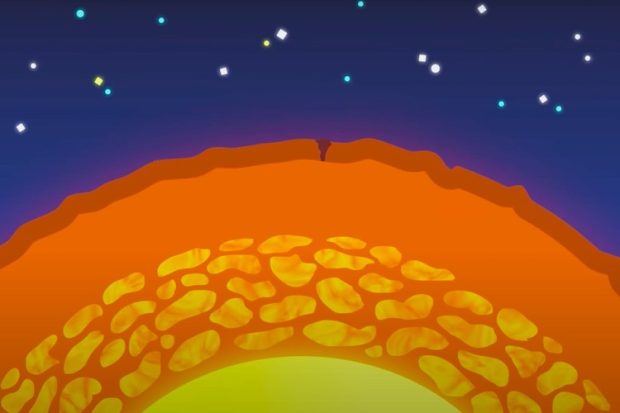Sudden evolution of galaxies due to gas removal
Galaxies shutdown star formation suddenly when their entire cold gas reservoir is displaced
What is equilibrated water? How is the D/H ratio related to the Big Bang? Staff Member at Max Planck Institute for Solar System Research, Paul Hartogh, explains what fingerprints of matter are.
The D/H ratio can be used as some kind of fingerprint for formation of the solar system, to constrain the history of the solar system. The reason is the D/H ratio was basically formed during the big bang, in the first few seconds there was a phase called primordial nucleosynthesis.
 Asteroids are formed in collisions of protoplanets A new article from Nature explains chondrules, and the results of protoplanetary impacts
Asteroids are formed in collisions of protoplanets A new article from Nature explains chondrules, and the results of protoplanetary impactsAnd indeed, if you measure the D/H ratio in the interstellar medium for instance, in our galaxy, we see lower values. So now we see something like 15 to 20 parts per million. If we jump to our solar system, which formed about 4.5 billion years ago, we had a protoplanetary disc from which the solar system formed which consisted mainly of hydrogen and dust. Of course there were also some other gases which formed in the interstellar medium. One important gas in this context is water vapor.
Then we have the ice giants, Uranus and Neptune. They are called ice giants because they not only consist of hydrogen, but also a large amount of ices. When these planets formed, again we had these isotropic exchange reactions, maybe similar to what happened in the inner solar system during this water equilibration, but this time it was the other way around. The low D/H ratio of hydrogen was enriched by water, so that nowadays we measure higher D/H ratios in the hydrogen on the ice giants. So instead of 25ppm, we have something like 45ppm.

Galaxies shutdown star formation suddenly when their entire cold gas reservoir is displaced

Astrophysicist Didier Queloz on whether we can find life on Mars, Proxima Centauri, and the importance of oxyg...

Cosmologist Martin Rees on the history of space exploration, Sat Nav, and why robots are better than humans fo...